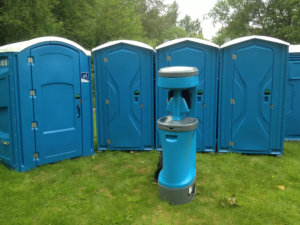Electrical work requires a great deal of manual dexterity and attention to detail. It also involves using a wide variety of hand tools and power tools.

Many DIYers are willing to tackle plumbing problems on their own, but when it comes to electrical work, that is often best left to a professional. Trying to make electrical repairs without the proper training can not only result in a costly mistake, but it could also be fatal. Visit https://www.ampi-electricinc.com/west-palm-beach-electrician/ to learn more.
Electricians are skilled tradespeople who specialize in designing, installing, and maintaining electrical wiring and systems. They use their knowledge of electrical codes and safety regulations to ensure that all installations meet the appropriate standards. They can read and interpret blueprints and electrical diagrams to plan the layout of wiring and determine what materials are needed for a job.
They may work on a variety of different types of electrical projects, from installing new outlets in your home to rewiring an entire building. They can also help with energy-efficiency upgrades and other improvements, such as adding solar panels to your roof.
While many electricians work in the field, some put their skills to use in an office setting. These professionals typically spend most of their time planning and managing electrical systems for commercial and industrial buildings. They work with architects, engineers, and construction teams to ensure that all electrical components are properly integrated into the overall design of a building or other structure.
Some electricians prefer to focus on residential electrical systems. They can install, repair, and maintain the electrical wiring and equipment in homes and other private structures. They can also help with renovations by installing new outlets and other fixtures. In addition, they can install and repair home automation systems and other advanced features.
While some Electricians choose to work for large companies, others own their own businesses. These individuals usually take on a more managerial role, overseeing the work of other Electricians and apprentices. They may also be responsible for negotiating contracts with clients or end-users. They frequently interact with customers, offering advice on electrical usage and safety precautions. They may also be required to submit reports on their work and performance. Some states require licensed Electricians to pass an examination and maintain a valid license.
Troubleshooting
Troubleshooting is a significant part of an Electrician’s job, and they are skilled at diagnosing electrical problems and finding effective solutions. This may involve inspecting wiring, testing circuits and devices, and tracing electrical pathways to identify issues. In addition, they work with other professionals, such as architects and engineers to ensure design compatibility, contractors to manage construction projects, and building inspectors to adhere to safety protocols.
Some common electrical issues that a Certified Electrician can solve include:
A recurring problem with lights or equipment not turning on. This can be a sign that a circuit is overloaded or that the switch on an appliance needs to be replaced. It could also mean that there is a problem with the wiring, which is a serious fire hazard.
Surges that cause appliances to malfunction or not turn on at all. These are usually caused by external forces, such as lightning strikes, but they can also be the result of improper installation or repairs. In most cases, these surges are only temporary, but they can damage expensive electronic equipment and appliances.
When an appliance or fixture starts to break down, it can be difficult to figure out what’s wrong. The first step is to isolate the issue. This involves determining what components and connections are affected by the failure, as well as the specific symptoms. The electrician can then use the information to determine possible causes for the problem.
Once an electrician has isolated the issue, they can then start to troubleshoot it. They will usually look at the input and output signal values of each component to see if they are consistent with their expected values. This will help them find which component isn’t sending the correct signals and causing the failure.
Another common issue that a Certified Electrician can troubleshoot is faulty switches or outlets. These can be due to a number of factors, including corrosion, rust, or rodents chewing through the wire insulation. They can replace these parts to restore full functionality to the device or outlet. In some cases, it’s necessary to replace the entire fixture.
Repair
Electrical technicians can repair wiring, circuits, outlets, switches, and lighting fixtures. They also perform routine maintenance on electrical systems to identify potential problems and fix them before they become major issues. They may also work on industrial machines and equipment. They can often work alone or with other skilled tradespeople such as plumbers and HVAC technicians.
Faulty wiring can be a serious fire hazard in any home or business. An electrician can rewire your entire electrical system to ensure that your wiring is safe and up to date. This includes replacing old fuses or breaker panels with new, more efficient ones. They can also add additional outlets and receptacles to your property to accommodate more power-hungry appliances like computers, televisions, or microwaves.
One of the most common home electrical repairs is replacing old fuses with modern fuses or breaker panels. This upgrade can improve your home’s energy efficiency, reduce your utility bills, and make it safer for you and your family to use electrical appliances. An electrician can help you choose the right fuses for your needs and install them safely in your home.
Another popular electrical service is adding ceiling fans to rooms that need more cooling. These devices require complex wiring that can only be handled by a professional electrician. In addition, they can help you choose the right fan for your space and provide tips on proper mounting.
When you need to hire an electrician, it’s important to find a reliable company. Ask friends and neighbors for recommendations, and check online reviews. You should also be sure to verify that the electrician is licensed, insured, and bonded. They should be able to show you their credentials upon arrival, and they should arrive in a company vehicle with a logo, uniform, or badge.
Some warning signs that you need an electrician include a tripped breaker, burning smells coming from outlets, or flickering lights. If you notice any of these problems, turn off your electricity and call a qualified electrician immediately. You should also contact an electrician if you experience repeated blown fuses or other signs of overheating and damage to your wiring.
Maintenance
A high school diploma is typically required to become a licensed electrician. You can earn an associate’s degree at a trade school or complete an apprenticeship program that includes classroom hours and on-the-job training. An apprenticeship can take 4-5 years, but you’ll gain all of the skills necessary to work as a journeyman electrician.
Electricians repair and install electrical wiring, systems, and fixtures in a variety of settings. They read blueprints and diagrams to understand the layout of electrical equipment and determine the materials needed for each project. They also work with other construction professionals to ensure that their work is consistent with building code requirements and standards.
They can rewire your home to accommodate new appliances or make upgrades for improved energy efficiency. They can also install smart home technology like lighting, thermostats, and security systems. Additionally, they can help you create a dedicated circuit for heavy energy-consuming appliances like refrigerators and washers and dryers. They can also provide surge protection to safeguard your appliances against power spikes that may damage them.
During maintenance, they may inspect your electrical system for signs of wear and tear. They can then recommend any repairs needed to keep your equipment in good condition. They may also perform routine tasks such as changing light bulbs and swapping out outlets that are no longer working or safe to use.
When an issue is found, they’ll follow the appropriate safety protocols to make the necessary repairs and prevent further issues. This may include putting in new conduits to house electrical wires and ensuring that all electrical connections are secure and insulated. They’ll also test each outlet to make sure it’s functioning properly and replace worn or damaged wires.
In industrial settings, they’ll inspect and maintain large machinery and electrical systems that support production processes. They may be required to work in tight spaces and operate hand tools while wearing protective gear. They’ll also work closely with mechanical engineers to ensure that electrical equipment is compatible with existing systems. Additionally, they’ll liaise with facility managers and safety inspectors to adhere to company policies and regulations.








